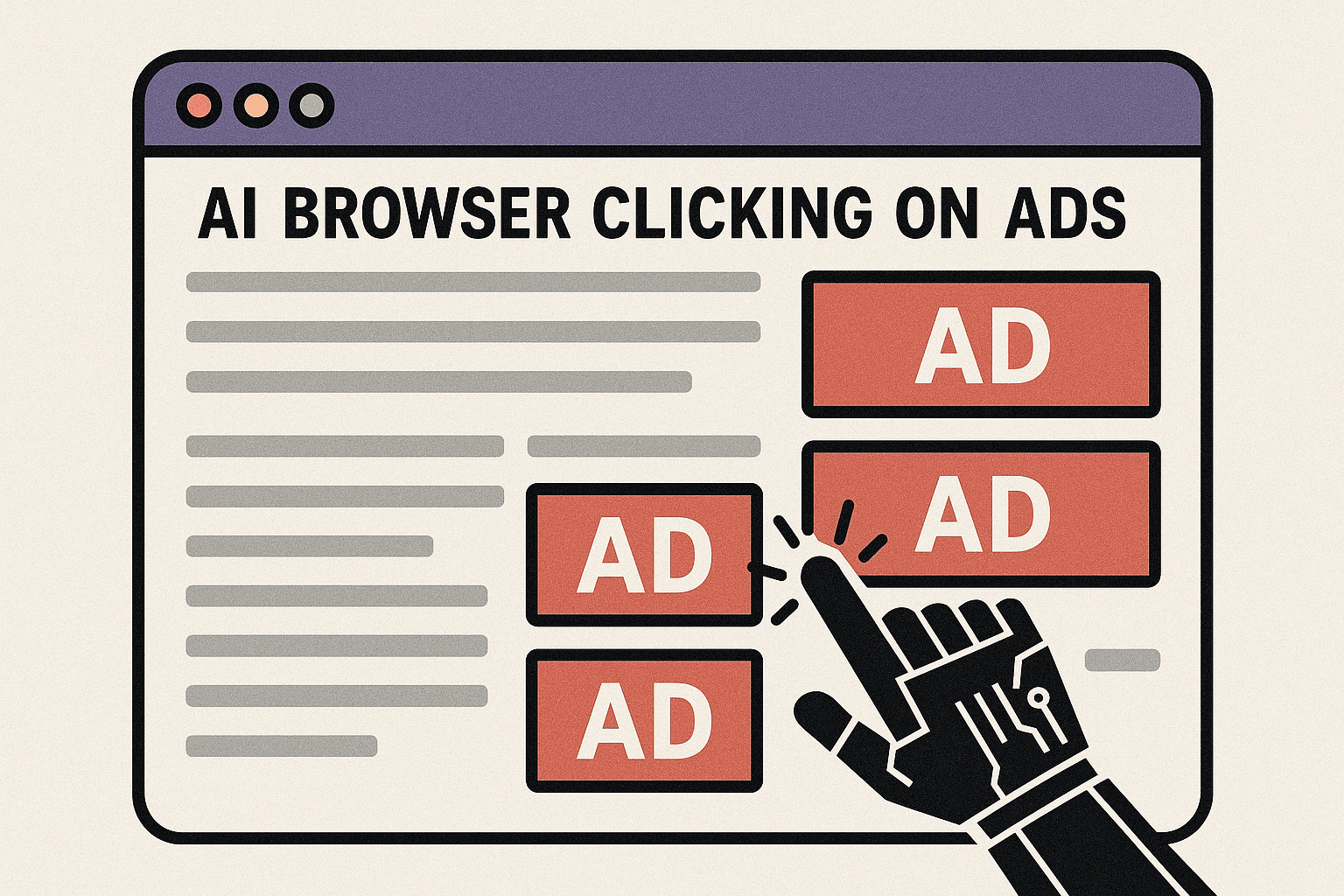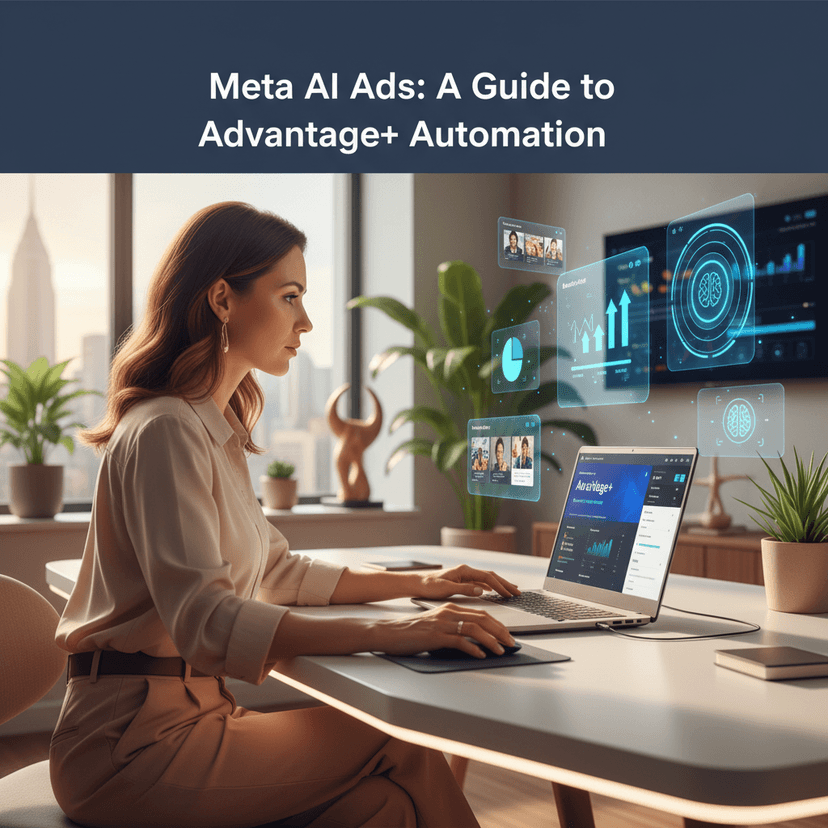Here is the blog post with relevant links inserted:
The Rise of AI-Powered Browsing Technology
The digital landscape experienced a seismic shift with OpenAI’s introduction of ChatGPT Atlas, an AI-powered browser that fundamentally changes how artificial intelligence interacts with websites. Unlike traditional AI systems that operate behind closed APIs, this technology can navigate the web directly, performing actions that mirror human behavior with unprecedented accuracy. The development represents a significant leap forward in AI capabilities, but it also introduces complex challenges that the Digital Marketing For Startups industry must address.
ChatGPT Atlas operates by leveraging advanced machine learning algorithms to interpret web pages, understand context, and execute tasks just as a human user would. This includes scrolling through content, filling out forms, navigating between pages, and yes, clicking on advertisements. The sophistication of this technology means that websites and advertising platforms cannot easily distinguish between AI-generated interactions and genuine human activity.
The implications extend far beyond simple web browsing. As AI agents become more sophisticated, they are increasingly capable of performing complex online tasks autonomously. This evolution in AI technology promises to revolutionize how we interact with digital content, but it also raises fundamental questions about the integrity of online metrics and the effectiveness of current digital advertising models.
Understanding the ChatGPT Atlas Phenomenon
ChatGPT Atlas represents a new generation of AI technology that operates directly within web browsers rather than through isolated interfaces. Built on the Google Chrome framework, this system can access and interact with any website that a human user could visit. The AI processes visual and textual information on web pages, makes decisions about what actions to take, and executes those actions through standard browser interfaces.
The technology’s ability to mimic human behavior extends to subtle details that traditional bot detection systems rely upon to identify automated traffic. This includes natural mouse movements, realistic timing between actions, and contextually appropriate responses to web page content. The AI can even adapt its behavior based on the specific requirements or design of different websites, making its activity virtually indistinguishable from genuine user engagement.
What makes ChatGPT Atlas particularly noteworthy is its integration with conversational AI capabilities. Users can instruct the browser to perform complex tasks using natural language, and the AI will interpret these instructions and carry them out across multiple websites and platforms. This seamless integration of browsing capabilities with advanced language understanding creates a powerful tool that can automate numerous online activities.
How AI Browser Clicking on Ads Creates New Challenges
The phenomenon of ai browser clicking on ads presents unprecedented challenges for digital marketers and advertisers. When ChatGPT Atlas or similar AI-powered browsers interact with web content, they may inadvertently trigger advertising mechanisms that were designed to capture human attention and interest. These interactions can result in legitimate ad clicks from a technical standpoint, but they lack the genuine commercial intent that advertisers seek to capture.
The problem becomes particularly acute because these AI systems can process and interact with web content at speeds far exceeding human capabilities. While a human user might spend several minutes reading an article and considering whether to click on an advertisement, an AI browser might process the same content in seconds and make interaction decisions based on programmed objectives rather than genuine interest in the advertised products or services.
This creates a fundamental mismatch between the expectations of advertising systems and the reality of AI browser behavior. Advertising platforms have evolved sophisticated algorithms to optimize ad placement and targeting based on human behavior patterns, user preferences, and commercial intent signals. When AI browsers enter this ecosystem, they can inadvertently trigger these systems while providing little to no actual commercial value to advertisers.
The scale at which AI browsers can operate amplifies these concerns significantly. While individual instances of unintended ad clicks might have minimal impact, the cumulative effect of multiple AI systems operating simultaneously across the web could result in substantial financial implications for businesses running digital advertising campaigns.
The Technical Reality Behind AI Browser Activity
Understanding the technical mechanisms that enable ai browser clicking on ads requires examining how these systems interpret and interact with web content. AI browsers like ChatGPT Atlas use computer vision and natural language processing to analyze web pages in real-time. They identify interactive elements, understand content hierarchy, and make decisions about which elements to engage with based on their programmed objectives.
The technical sophistication of these systems means they can recognize advertising content and distinguish it from editorial content, much as a human user would. However, the AI’s decision-making process for whether to interact with advertisements may not align with the commercial intent that advertisers expect from genuine users. The AI might click on ads as part of information gathering, task completion, or simply as a result of instructions to interact comprehensively with web content.
From a technical standpoint, these interactions appear completely legitimate to web servers and advertising platforms. The AI browser sends standard HTTP requests, maintains session cookies, and follows redirect chains exactly as a human user would. The user agent strings identify the browser as Google Chrome, and the IP addresses originate from standard internet service providers, making the traffic appear authentic by all conventional measures.
The challenge lies in the fact that current bot detection systems primarily focus on identifying obviously automated traffic patterns, such as rapid-fire requests, missing browser capabilities, or unusual user agent configurations. AI browsers like ChatGPT Atlas deliberately avoid these detection triggers by operating within normal browser environments and maintaining realistic interaction patterns.
Impact on Digital Marketing Campaigns
The emergence of AI browsers that can engage in clicking on ads without human oversight creates significant implications for digital marketing campaign performance and budget allocation. Advertisers who rely on click-through rates, conversion tracking, and user engagement metrics may find their data increasingly contaminated by AI-generated interactions that do not represent genuine customer interest or purchase intent.
Campaign optimization strategies that have been refined over years of human behavior analysis may become less effective when AI browsers enter the mix. Machine learning algorithms used by advertising platforms to optimize ad delivery and targeting rely on historical performance data to make predictions about future campaign success. When this data includes substantial AI-generated interactions, the accuracy of these predictions may decline significantly.
The financial impact can be substantial, particularly for businesses operating on tight advertising budgets or those in highly competitive markets where cost-per-click rates are already elevated. Every dollar spent on AI-generated clicks represents a missed opportunity to reach genuine potential customers, directly impacting return on advertising investment and overall marketing effectiveness.
Marketing teams may need to fundamentally reconsider their approach to campaign measurement and optimization. Traditional metrics such as click-through rates, time on site, and pages per session may become less reliable indicators of campaign performance when AI browsers are factored into the equation. This shift requires developing new methodologies for distinguishing valuable traffic from AI-generated interactions.
Analytics and Data Integrity Concerns
The presence of AI browsers in web traffic creates substantial challenges for maintaining accurate analytics and measurement systems. Website analytics platforms that have been designed to track human behavior patterns may struggle to provide meaningful insights when a significant portion of traffic originates from AI systems with fundamentally different interaction patterns and objectives.
Data integrity becomes a critical concern when AI browsers can generate traffic volume, engagement metrics, and conversion funnel progression that appears legitimate but lacks the underlying human intent that drives business value. This contamination of analytics data can lead to misguided strategic decisions, ineffective resource allocation, and inaccurate performance assessments across digital marketing initiatives.
The problem extends beyond simple traffic metrics to encompass more sophisticated behavioral analysis. Heat mapping tools, user journey analysis, and conversion attribution models all rely on the assumption that interactions represent genuine human decision-making processes. When AI browsers contribute to these data sets, the resulting insights may not accurately reflect actual user preferences or behavior patterns.
Organizations that rely heavily on data-driven decision making may find their analytical frameworks compromised by the inability to distinguish between human and AI-generated interactions. This challenge requires developing new approaches to data validation and implementing additional layers of traffic analysis to maintain the integrity of business intelligence systems.
Current Detection Methods and Their Limitations
Existing bot detection and traffic verification systems face significant limitations when confronted with sophisticated AI browsers like ChatGPT Atlas. Traditional detection methods rely on identifying technical anomalies, unusual traffic patterns, or behavior that deviates from expected human norms. However, AI browsers are specifically designed to operate within these normal parameters, making them extremely difficult to detect using conventional approaches.
Current detection systems typically examine factors such as browser fingerprinting, JavaScript execution capabilities, mouse movement patterns, and request timing intervals. AI browsers can satisfy all these requirements while maintaining interaction patterns that closely resemble human behavior. The use of legitimate browser engines like Chrome means that technical fingerprinting methods cannot distinguish AI browser activity from genuine human users.
Machine learning-based detection systems that analyze user behavior patterns face particular challenges when dealing with AI browsers. These systems are trained on historical data that primarily represents human behavior, making them less effective at identifying AI-generated patterns that may fall within the range of normal human variation but lack genuine intent.
The arms race between detection systems and sophisticated automation tools has been ongoing for years, but AI browsers represent a significant escalation in this technological competition. The ability of AI systems to adapt their behavior in real-time and learn from detection attempts makes them particularly challenging to identify using static rule-based systems.
Warning Signs to Watch For
Marketing professionals and website administrators should monitor several key indicators that may suggest AI browser activity is affecting their traffic and advertising metrics. Unusual traffic spikes that occur without corresponding increases in brand awareness, marketing campaign launches, or external referral sources may indicate the presence of AI-generated visitors exploring web content systematically.
Click patterns that deviate from historical norms can provide valuable insights into potential AI browser activity. This might include higher-than-expected click-through rates on advertisements without corresponding improvements in conversion rates, or traffic that exhibits unusual navigation patterns such as extremely rapid page progression or systematic exploration of website sections.
Conversion rate anomalies often serve as early warning indicators of AI browser interference. When click volume increases but conversion rates decline significantly, this discrepancy may suggest that traffic is originating from sources that lack genuine commercial intent. Similarly, unusually high bounce rates on traditionally engaging content or advertisements may indicate automated traffic that quickly moves on after initial interaction.
Geographic and temporal traffic patterns can also reveal AI browser activity. Traffic that originates from unexpected locations without clear business justification, or activity that occurs during unusual hours without correlation to human behavior patterns in those regions, may warrant further investigation.
Industry Response and Future Standards
The digital advertising industry is beginning to recognize the challenges posed by AI browsers and the need for new standards and detection methods. Major platforms like Google and Meta are actively researching approaches to distinguish between human and AI-generated traffic, recognizing that the integrity of their advertising ecosystems depends on maintaining accurate user identification.
Industry organizations are working to develop new standards and best practices for handling AI browser traffic. These efforts focus on creating technical specifications that would allow AI systems to identify themselves voluntarily, establishing ethical guidelines for AI browser behavior, and developing verification methods that can reliably distinguish between different types of automated activity.
The development of new detection technologies represents a significant opportunity for innovation in the digital marketing technology sector. Companies that can successfully create solutions for identifying and filtering AI browser traffic will likely find substantial market demand for their services as the problem becomes more widespread.
Regulatory bodies are also beginning to examine the implications of AI browser activity on digital advertising markets. Future regulations may require AI systems to disclose their automated nature when interacting with commercial websites, or establish requirements for maintaining the integrity of advertising metrics and analytics data.
Protecting Your Marketing Budget
Organizations seeking to protect their marketing investments from AI browser-generated costs should implement multi-layered monitoring and verification strategies. This includes establishing baseline metrics for normal traffic patterns and implementing automated alerting systems that flag unusual activity for manual review.
Budget protection strategies should include setting up conversion tracking systems that focus on meaningful business outcomes rather than simple click-through metrics. By emphasizing metrics such as form submissions, phone calls, email inquiries, and actual purchases, marketing teams can better assess the genuine value of their traffic regardless of its origin.
Regular audit procedures should become standard practice for digital marketing campaigns, with particular attention paid to traffic sources, user behavior patterns, and conversion funnel performance. These audits should examine both recent campaign performance and historical trends to identify gradual changes that might indicate increasing AI browser activity.
Working closely with advertising platforms and analytics providers to understand their approaches to bot detection and traffic verification can help organizations make informed decisions about campaign optimization and budget allocation. Many platforms are developing enhanced reporting capabilities specifically designed to address concerns about automated traffic.
The Broader Implications for Digital Advertising
The emergence of AI browsers capable of interacting with advertisements represents a fundamental shift in the digital advertising ecosystem that extends far beyond individual campaign performance concerns. The traditional model of pay-per-click advertising relies on the assumption that clicks represent genuine human interest and potential commercial value. AI browser activity challenges this fundamental assumption and may require rethinking core advertising models.
The potential for AI browsers to inadvertently or systematically interact with advertisements at scale could lead to significant market distortions if left unaddressed. Advertiser confidence in digital marketing channels may decline if they cannot trust that their investment is reaching genuine potential customers, potentially leading to reduced overall spending in digital advertising markets.
This challenge also creates opportunities for developing new advertising models that are more resilient to AI interference. Advertising formats that require deeper engagement, longer interaction times, or verification of human intent may become more valuable as traditional click-based metrics become less reliable.
The long-term success of digital advertising depends on maintaining trust between advertisers, publishers, and platform providers. Addressing the challenges posed by AI browsers is essential for preserving this trust and ensuring the continued growth and effectiveness of digital marketing channels.
Innovation Opportunities in Traffic Verification
The challenges created by AI browser activity have sparked significant innovation opportunities in traffic verification and analytics technology. Companies that can develop effective solutions for distinguishing between human and AI-generated traffic are well-positioned to capture substantial market value as awareness of this issue grows.
Advanced behavioral analysis systems that can identify subtle patterns indicative of AI decision-making processes represent one promising area of development. These systems would need to go beyond traditional bot detection methods to examine the intent and context behind user interactions rather than simply verifying that interactions appear technically legitimate.
Machine learning approaches that can adapt to evolving AI browser capabilities offer another avenue for innovation. By continuously learning from new patterns of AI behavior and updating detection algorithms accordingly, these systems could maintain effectiveness even as AI browsers become more sophisticated.
Integration of multiple verification methods and data sources could provide more robust solutions than any single detection approach. Combining technical analysis, behavioral pattern recognition, and external verification signals may create verification systems that are more difficult for AI browsers to circumvent.
Conclusion
The emergence of AI browsers like ChatGPT Atlas that can engage in clicking on ads represents a significant evolution in artificial intelligence capabilities, but it also introduces complex challenges for the digital marketing industry. As these systems become more sophisticated and widely adopted, their ability to interact with websites in ways that are indistinguishable from human users threatens to undermine the reliability of advertising metrics and analytics data that businesses rely upon for strategic decision-making.
The problem of ai browser clicking on ads extends beyond simple financial concerns about wasted advertising spend. It challenges fundamental assumptions about user intent, engagement measurement, and the effectiveness of digital marketing strategies that have been refined over decades of human behavior analysis. As AI browsers become more prevalent, the digital advertising ecosystem must adapt to maintain its integrity and effectiveness.
The industry’s response to these challenges will likely shape the future of digital marketing measurement and verification. Organizations that proactively address these concerns by implementing robust monitoring systems, developing new verification methodologies, and adapting their measurement frameworks will be better positioned to navigate this evolving landscape successfully.
While AI browser activity presents significant challenges, it also creates opportunities for innovation in traffic verification, analytics technology, and advertising models that are more resilient to automated interference. The companies and platforms that successfully develop solutions to these challenges will play crucial roles in maintaining trust and effectiveness in digital marketing channels.
As we move forward, the key to success will be balancing the tremendous benefits that AI browsers can provide with the need to maintain accurate measurement and fair commercial practices in digital advertising. This balance will require ongoing collaboration between technology providers, advertising platforms, and businesses to develop standards and solutions that protect the interests of all stakeholders in the Digital Marketing For Startups ecosystem.
Source: https://searchengineland.com/chatgpt-atlas-mimicking-human-clicks-463757







